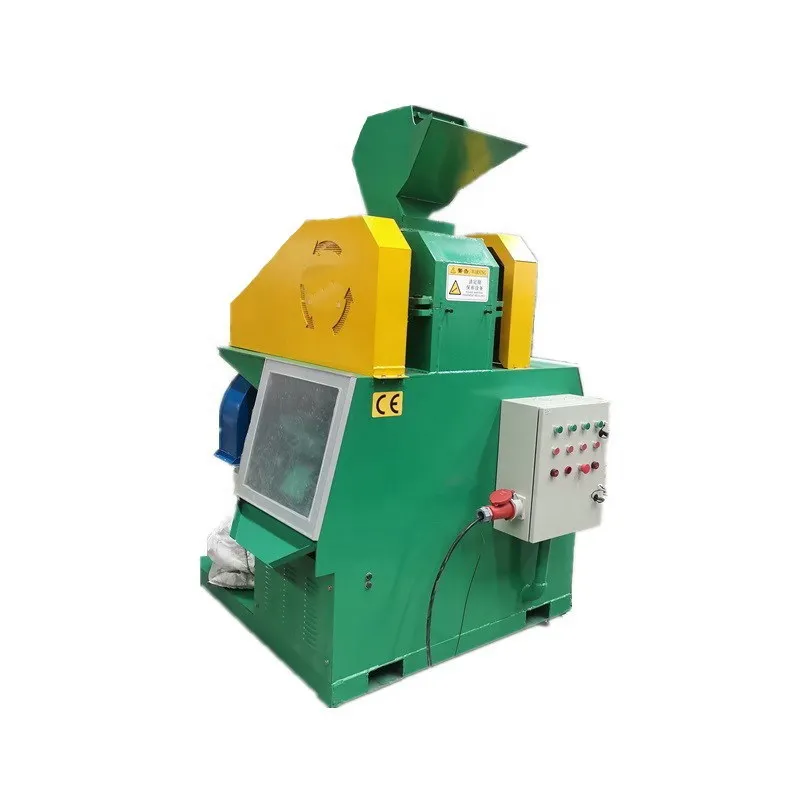
12 月 . 04, 2024 09:55 Back to list
Understanding Eddy Current Separators An Overview
Eddy current separators are pivotal devices widely used in recycling and waste management processes. They serve a critical role in separating non-ferrous metals from other materials, thereby facilitating enhanced recycling efforts and contributing to the efficient recovery of valuable resources. In this article, we will explore how eddy current separators work, their components, and their applications in various industries.
The Working Principle
At the core of an eddy current separator lies the principle of electromagnetic induction. When a conductor, such as aluminum or copper, is passed through a magnetic field, it experiences a change in magnetic flux that induces swirling currents, known as eddy currents. These currents generate their own magnetic field, which interacts with the original field, resulting in a repulsive force that causes the non-ferrous metals to be expelled from the rest of the material stream.
Typically, eddy current separators include a conveyor belt, a magnetic rotor, and a control system. The conveyor belt transports mixed materials towards the separator, where the rotor, often equipped with a series of powerful magnets, creates the magnetic field. As the material moves through this field, the non-ferrous metals are influenced by the eddy currents and are flung away into a separate chute, while non-metal and ferrous materials continue along the conveyor for further processing.
Key Components
1. Magnetic Rotor This is the heart of the eddy current separator. The rotor spins rapidly to generate a changing magnetic field. Its design, including the size, shape, and strength of the magnets, plays a crucial role in determining the efficiency and effectiveness of the separation process.
2. Conveyor Belt The conveyor belt transports the material to be sorted under the magnetic rotor. It is essential that the belt operates smoothly and consistently to ensure that materials are efficiently processed.
3. Control System Modern eddy current separators are equipped with advanced control systems that optimize the separation process. They can adjust parameters such as rotor speed, belt speed, and the angle at which materials are fed into the separator, depending on the type and volume of materials being processed.

Applications
Eddy current separators have numerous applications across various sectors. In the recycling industry, they are primarily used to separate aluminum cans, copper wires, and other non-ferrous metals from mixed waste streams. This not only recovers valuable materials for reuse but also reduces the environmental impact associated with mining and manufacturing new metals.
In the automotive industry, these separators can be employed to recover metals from shredded vehicles, streamlining the recycling process and increasing profitability. Additionally, in the construction and demolition sectors, eddy current separators help reclaim metals from debris, further emphasizing their versatile applications.
Benefits of Eddy Current Separators
1. High Efficiency Eddy current separators can achieve remarkable separation rates, often exceeding 90%. This makes them capable of processing large volumes of material quickly and effectively.
2. Environmental Impact By enhancing metal recovery rates, eddy current separators contribute to reduced waste and lower environmental footprints associated with resource extraction.
3. Cost-Effective Operation Although the initial investment for an eddy current separator can be substantial, their operational efficiency often results in significant long-term savings, making them an economical choice for many businesses.
Conclusion
Eddy current separators are essential tools in modern recycling and waste management practices. By leveraging the principles of electromagnetic induction, these devices effectively separate non-ferrous metals from other materials, promoting resource recovery and sustainability. With ongoing advancements in technology, the efficiency and applications of eddy current separators are likely to expand, further enhancing their role in a circular economy.
Latest news
Unveiling the Power of Eddy Current Separator
NewsSep.25,2024
Transform Your Home Recyclin:home metal shredder
NewsSep.25,2024
The Future of Waste Management with Recycling Line Picker
NewsSep.25,2024
The Benefits of a Metal Recycling Plant
NewsSep.25,2024
Revolutionize Material Separation with Onwang Technology
NewsSep.25,2024
Innovative Waste Management: Unveiling the MSW Sorting Plant
NewsSep.25,2024